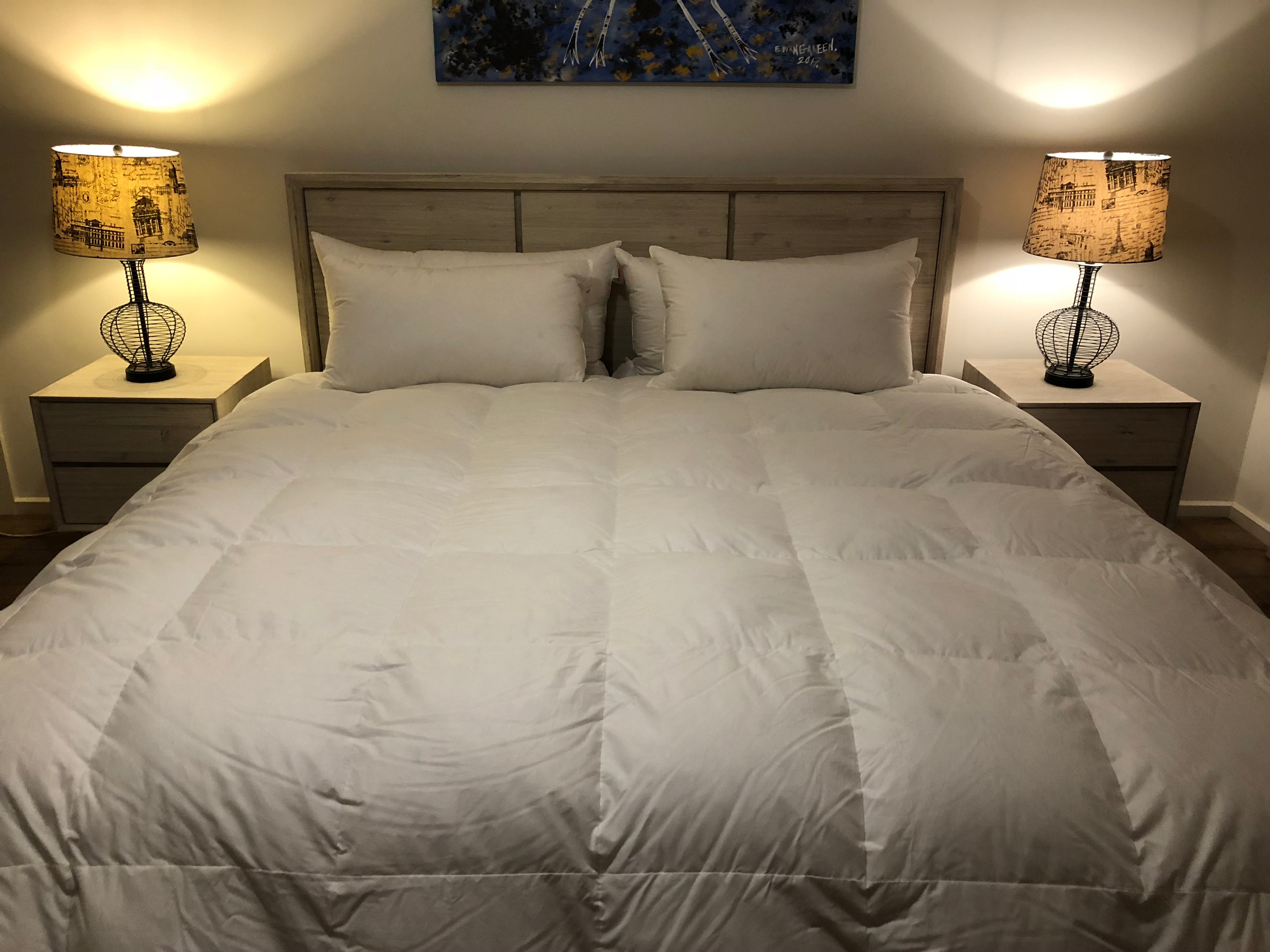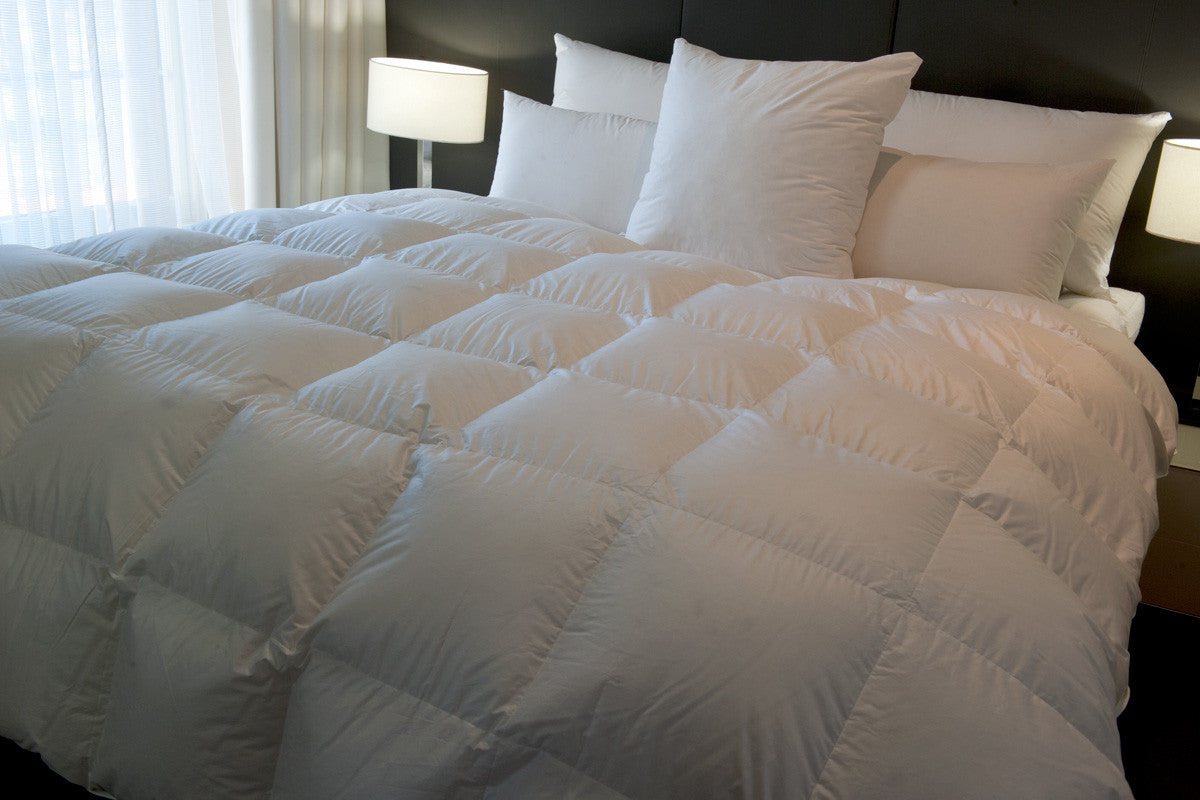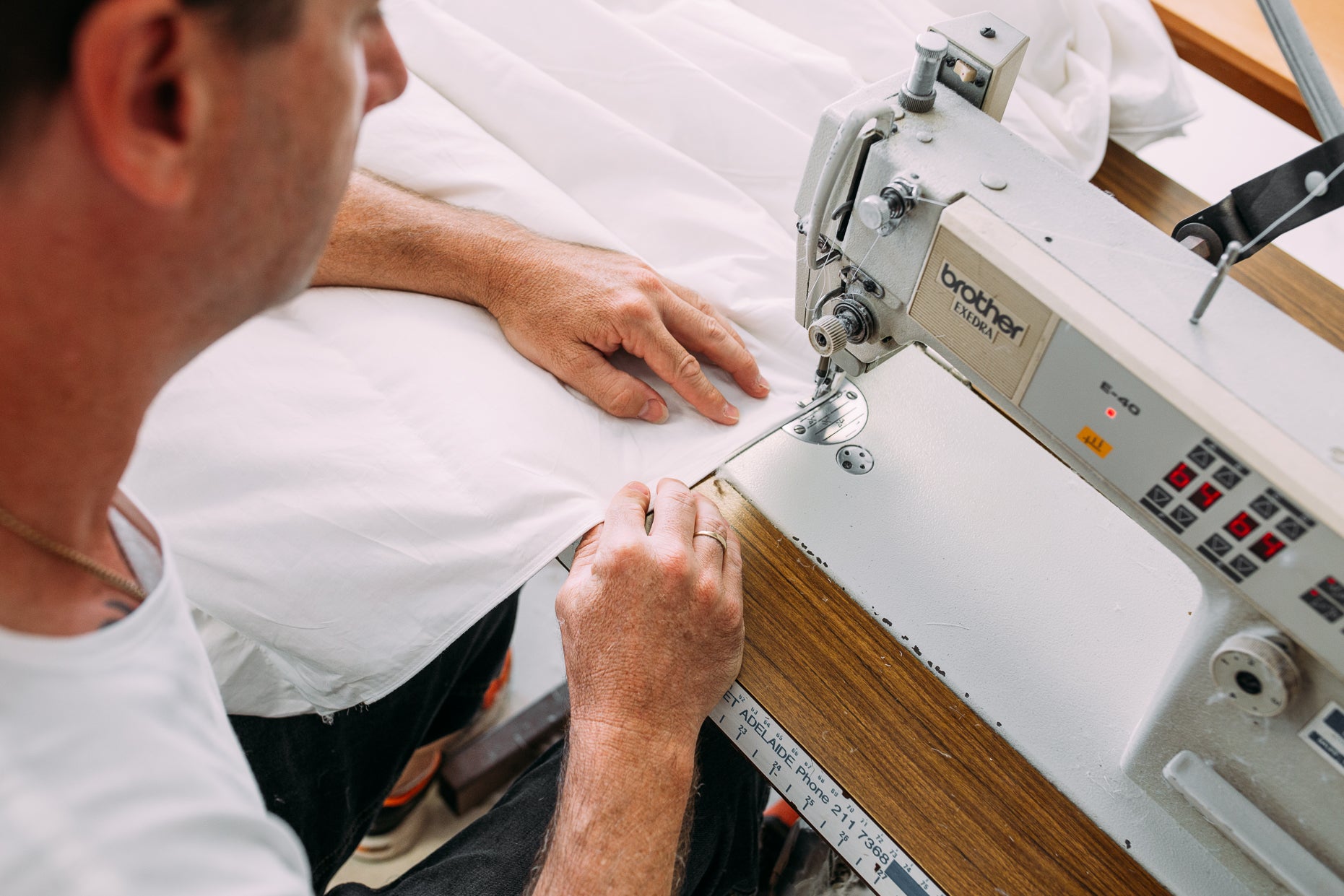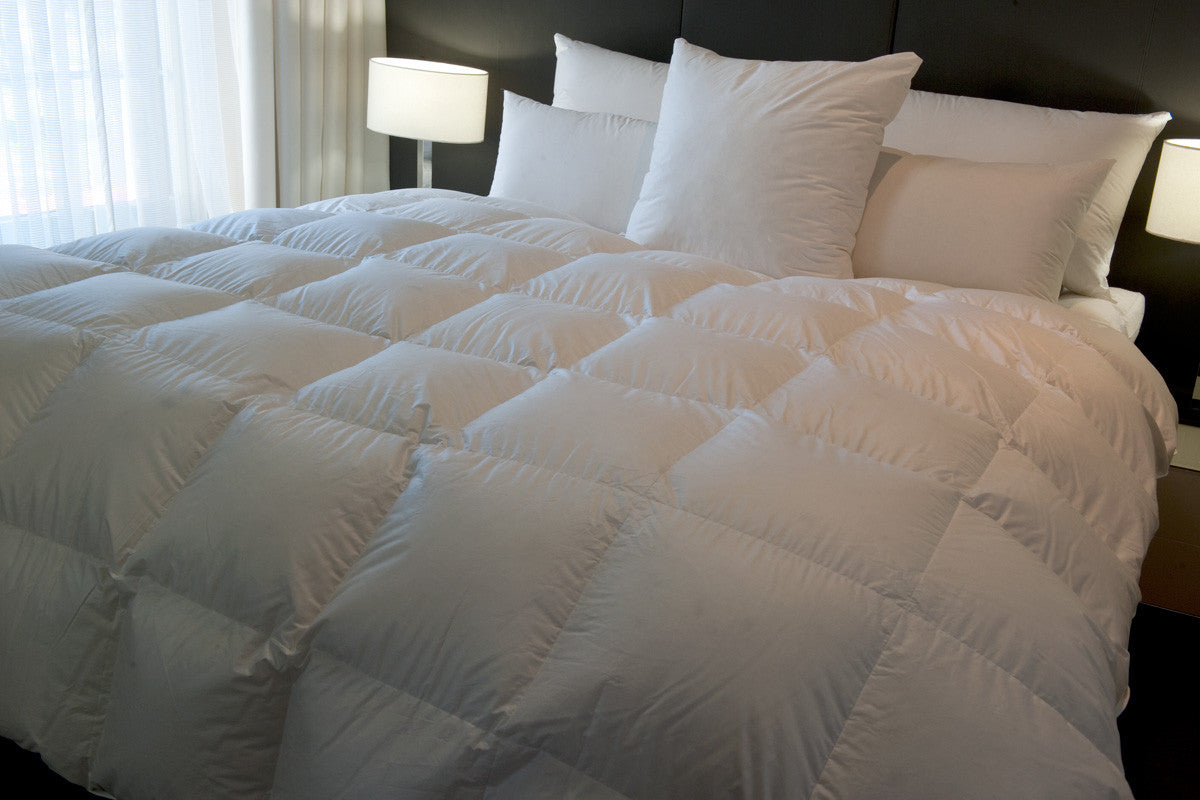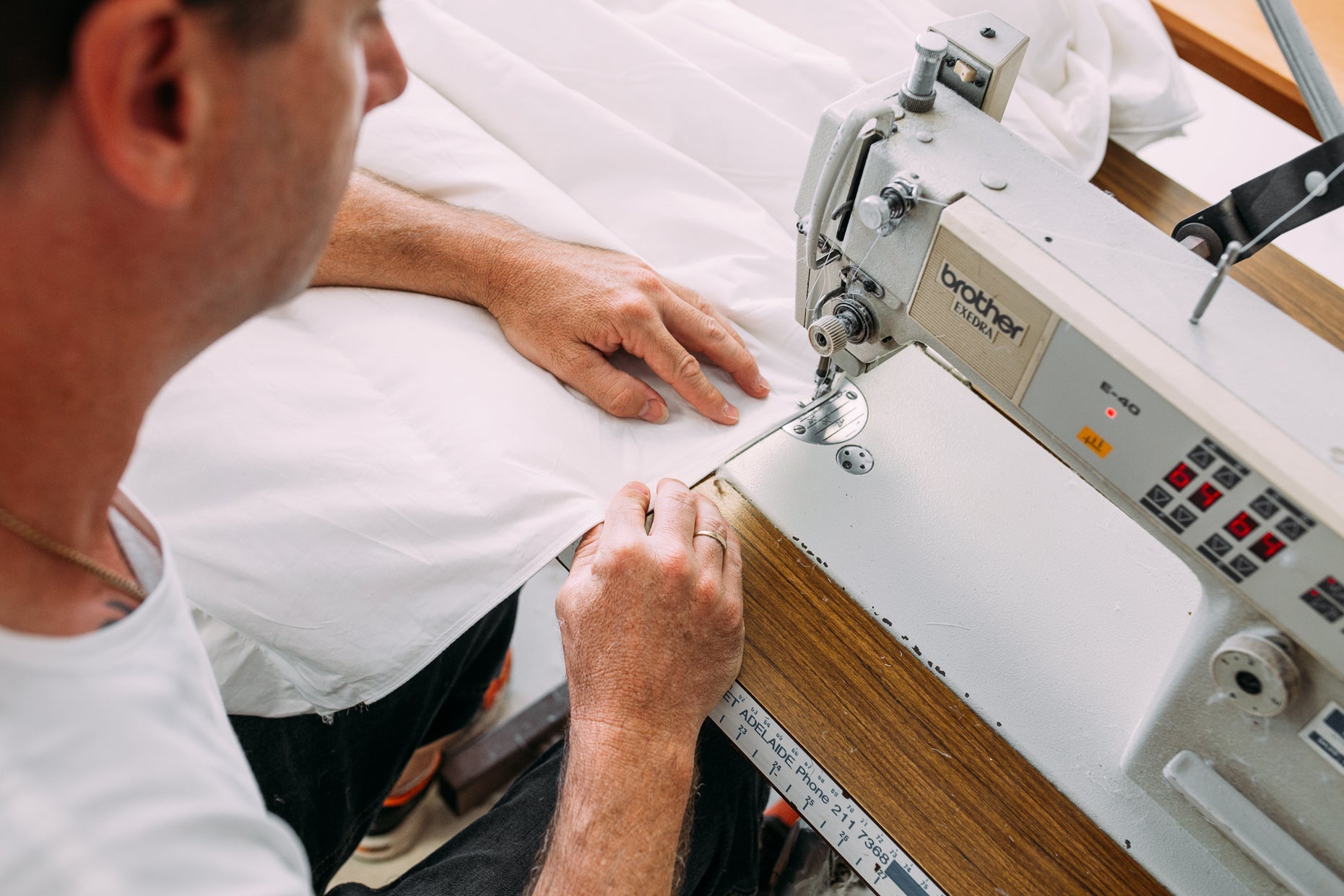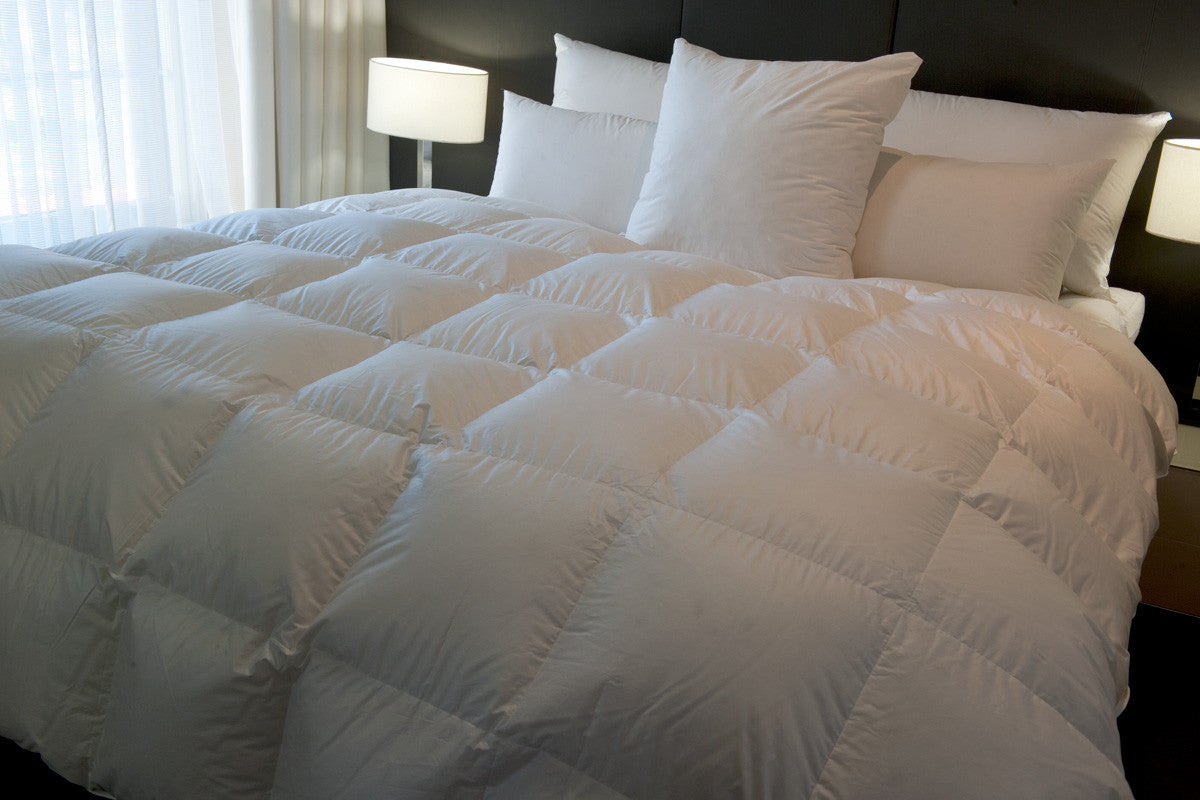
Goose Down vs. Synthetic Quilts: Which is the Better Choice for Comfort and Cost?
Choosing the right quilt can be a cosy game-changer, but with so many options, it’s easy to feel a bit overwhelmed. Two popular quilt fillings, goose down and synthetic fibres, each offer unique advantages. But how do you know which is right for you? Whether it’s cost, comfort, or warmth you’re after, this guide breaks down everything you need to know to help you make the ideal choice.
What is Goose Down Filling?
Goose down filling is the fluffy, soft material found underneath the outer feathers of geese. Known for its warmth and lightness, goose down has been used in quilts and bedding for centuries and is often considered a luxury fill due to its high warmth-to-weight ratio. Down traps air to provide insulation, making it a popular choice for cold climates and chilly nights.
What is Synthetic Filling?
Synthetic fillings, typically made from polyester fibres, aim to mimic the properties of down without the need for animal materials. There are many types of synthetic fills, ranging from hollowfibre to microfibre, with microfibre being the closest in feel to down. Synthetic quilts are often hypoallergenic, lighter on the wallet, and an ethical choice for those who prefer animal-free products.
Key Considerations: Cost, Comfort, and Warmth
1. Cost
- Goose Down: Goose down quilts tend to be more expensive due to the cost of ethically sourcing down. Higher-quality down, particularly that with a high fill power (a measure of down’s insulating ability), generally comes with a premium price tag. A goose down quilt can range from $1000 to over $4000, depending on quality and size.
- Synthetic: Synthetic quilts are significantly more affordable, typically priced between $100 and $500. Synthetic quilts are an excellent choice if you’re on a budget or looking for a spare quilt.
2. Comfort and Softness
- Goose Down: Known for its luxurious fluffiness, down has an incredibly soft, cloud-like feel. It’s naturally breathable and adapts well to body temperature, so it’s both insulating and comfortable, especially during winter. However, some find down slightly warmer than necessary in the summer.
- Synthetic: Synthetic fibres are designed to mimic the feel of down, and high-quality microfibre comes close to its softness and loft. While not quite as airy, synthetic quilts are soft and offer comfort without the extra warmth of down, making them suitable for year-round use.
3. Warmth and Insulation
- Goose Down: Goose down is one of the warmest natural insulators, so a down quilt will keep you toasty even in cold temperatures. A high fill-power down quilt offers excellent warmth without being heavy, making it a prime choice for winter.
- Synthetic: Synthetic quilts are also warm but may not reach the insulation level of premium down. They work well for mild to moderate winter temperatures and are ideal for those who want a lighter quilt. Some synthetic fills, like hollowfibre, are heavier than down but still retain heat effectively.
Key Features Comparison
- Warmth: Goose down provides superior warmth, ideal for colder climates, while synthetic offers moderate warmth suitable for most UK seasons.
- Weight: Down quilts are lighter yet warmer, while synthetic quilts may feel slightly heavier.
- Hypoallergenic: Synthetic fills are hypoallergenic, ideal for allergy sufferers. Down can be treated to be hypoallergenic, but synthetic options are generally better suited to those with sensitivities.
- Maintenance: Goose Down quilts require gentle washing and sometimes professional cleaning, while synthetic quilts are usually machine-washable and lower-maintenance.
FAQs
1. Is goose down or synthetic better for people with allergies?
Synthetic quilts are often hypoallergenic by default, making them an ideal choice for allergy sufferers. Down quilts can also be hypoallergenic if the down is thoroughly cleaned and treated, but synthetic options are generally safer for those with severe sensitivities.
2. Can goose down quilts be washed at home?
While you can wash a down quilt at home, it requires careful handling, such as a gentle cycle and low heat in the dryer. Many people prefer to have down quilts professionally cleaned to preserve their loft and longevity. Synthetic quilts, on the other hand, are easier to wash and dry at home.
3. Which is warmer, goose down or synthetic?
Goose down tends to be warmer, especially if it has a high fill power, making it perfect for winter and colder climates. Synthetic quilts offer good warmth but may require a thicker or heavier fill to reach the same insulation level as down.
4. How long do down and synthetic quilts last?
With proper care, goose down quilts can last 10–15 years or more due to the natural durability of down. Synthetic quilts typically last around 5–7 years as the fibres eventually flatten and lose insulation over time.
5. Are there ethical concerns with goose down?
Some down is sourced unethically, but many companies today provide ethically-sourced down. Look for certifications like the Responsible Down Standard (RDS) to ensure the down was harvested humanely. Synthetic fillings offer an alternative without animal-derived materials, which some buyers may prefer for ethical reasons.
Choosing between goose down and synthetic quilts comes down to personal preference, budget, and specific needs. Goose down offers unparalleled warmth and softness, while synthetic quilts provide affordability, easy maintenance, and hypoallergenic properties. Whichever you choose, investing in a quality quilt will make those chilly nights a whole lot cosier!



